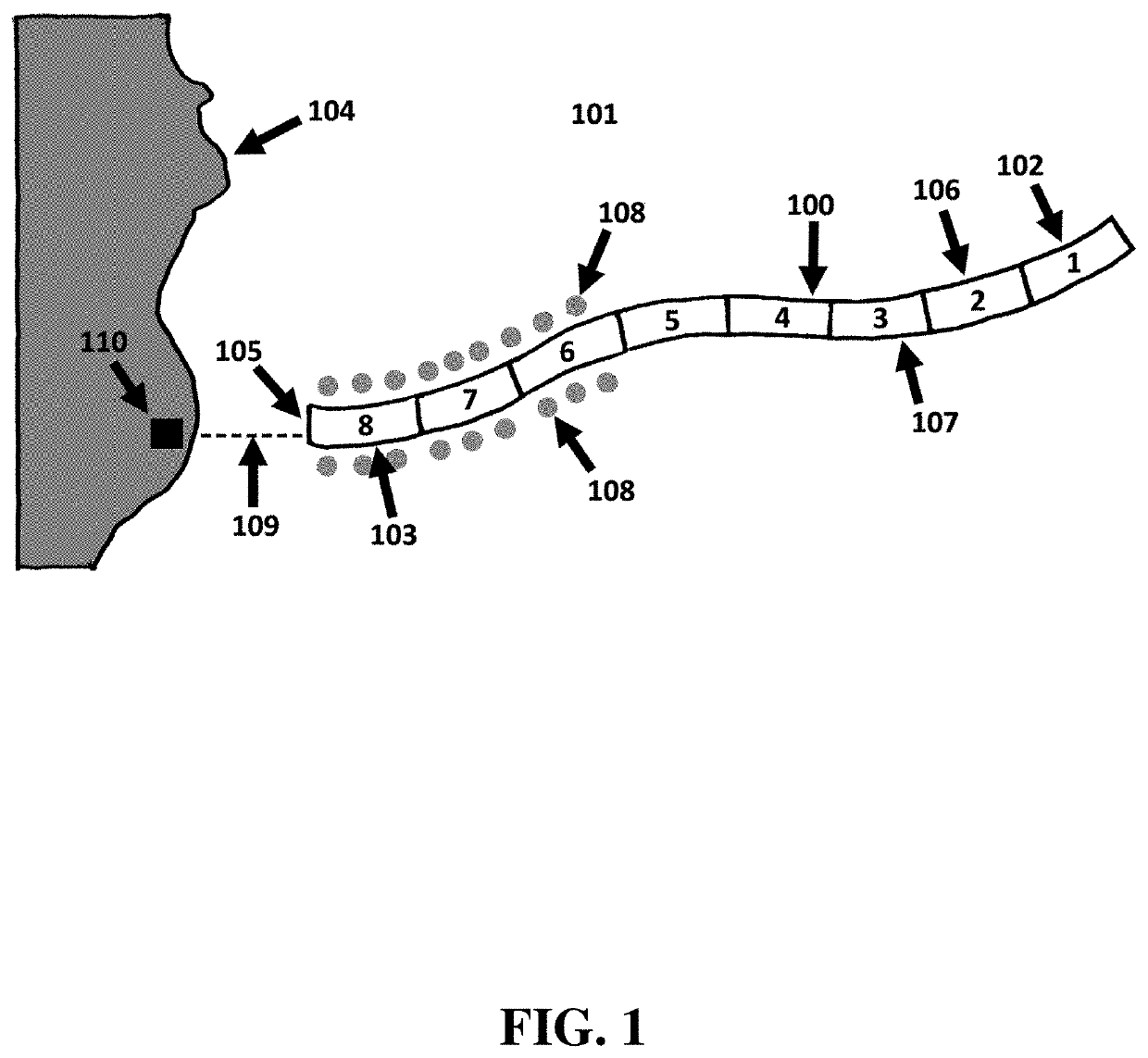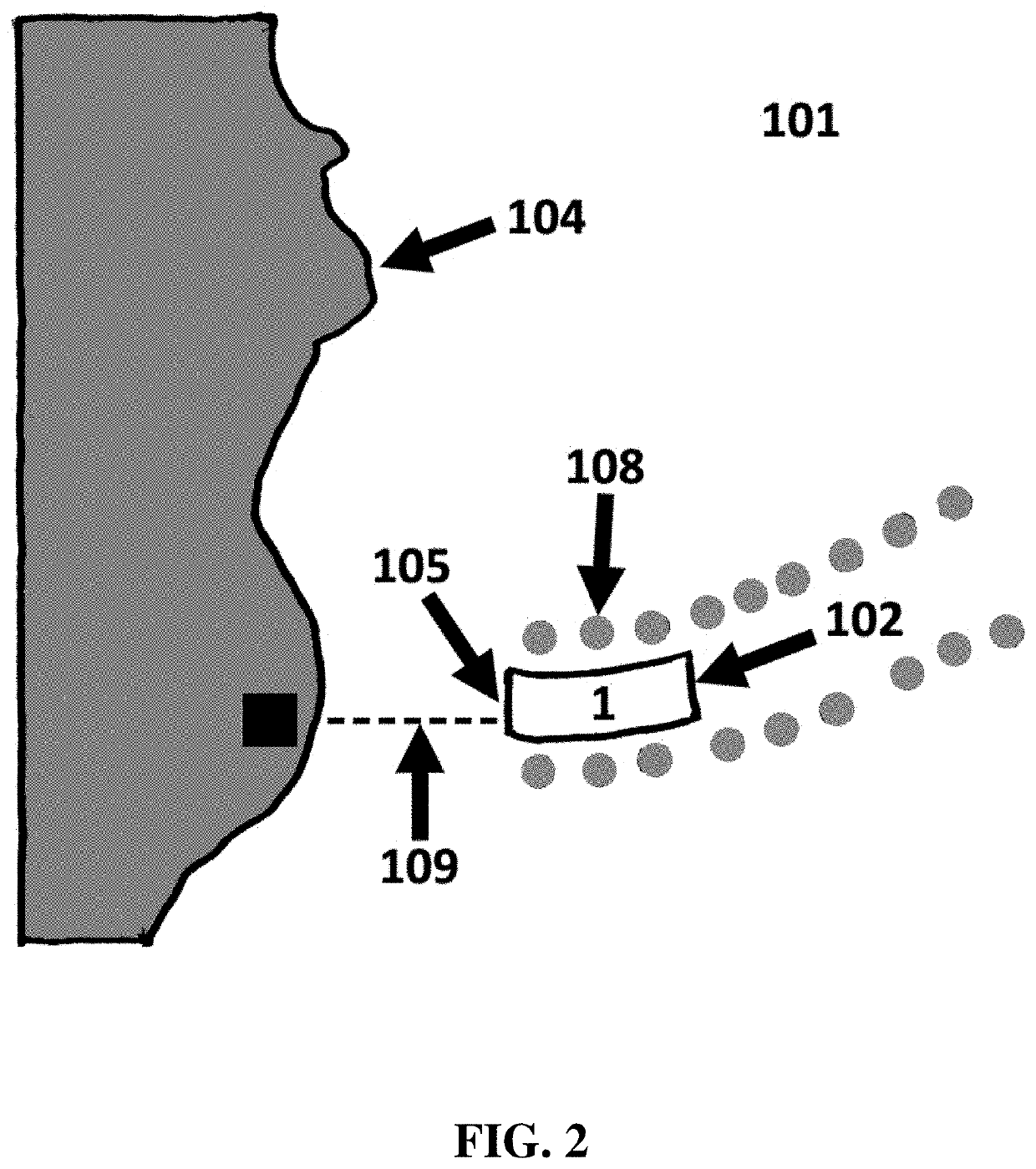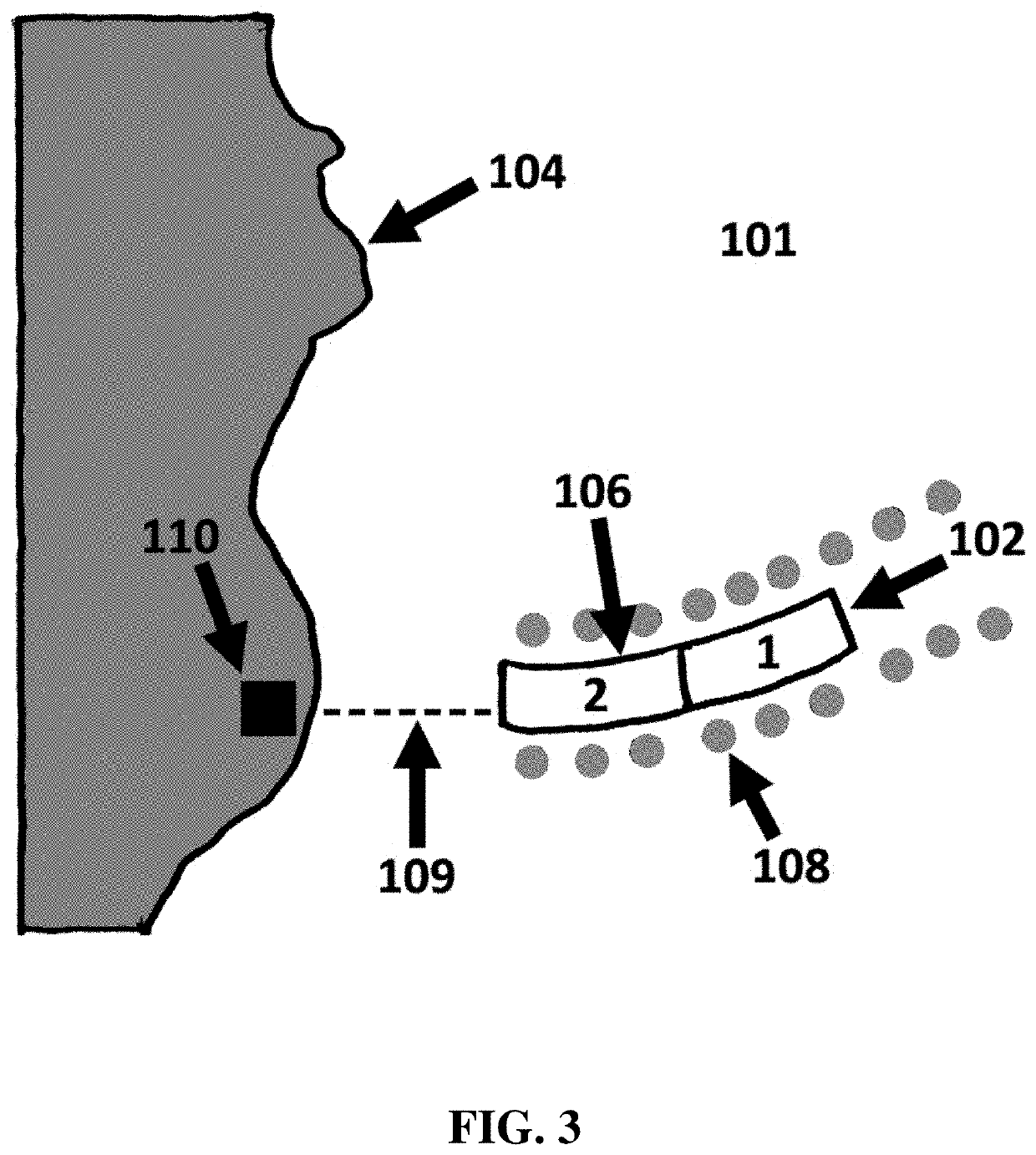Self-propelled buoyant energy converter and method for deploying same
a self-propelled, energy converter technology, applied in the direction of machines/engines, renewable energy generation, greenhouse gas reduction, etc., can solve the problems of high cost, dangerous mooring and configuration of devices in this manner, and the inability of the converter to move significantly from the position of initial deploymen
- Summary
- Abstract
- Description
- Claims
- Application Information
AI Technical Summary
Benefits of technology
Problems solved by technology
Method used
Image
Examples
embodiment 120
[0202]A farm embodiment 120 of the present disclosure has been extruded from a root location 121 near shore 122. Farm 120 now forms an elongate strand extending out into the ocean 124 substantially away from shoreline 122. However, farm 120 also “curves back” toward the shoreline at around 125. An anchor has been provided for the farm at 126 (this is optional). All the converters of the farm are operatively interlinked using linkages and many, if not all, of the converters are generating electricity from waves passing over the surface of the body of water on which the farm floats. This generated electricity is being transmitted, shared, combined, and / or pooled, along linkages and / or cables within the farm. Finally, the combined electricity being generated by the entire farm, and / or a portion thereof, is passing through electrical cable 127 to shore.
[0203]In this embodiment, the length of the entire farm, from 121 to 126, can be arbitrarily large, e.g. 10 km, 50 km, 100 km, or 1000 k...
embodiment 540
[0383]The embodiment 540 floats adjacent to an upper surface 541 of a body of water over which winds and waves pass. It 540 incorporates a Darrieus-type wind turbine 542 atop a rigid sail 543, with the turbine and the sail sharing coaxial concentric shafts. When air blows through the turbine causing it to rotate then a rotatably connected generator positioned within the buoy 540 is energized and produces electrical power.
[0384]The embodiment also extracts energy from heave of waves by means of two arrays of oscillating water columns (OWCs) embedded within opposing and parallel airfoil shaped keels 544 and 545. A rigid sail 543 rotatably connected to the top of the device provides wind-driven propulsion, and a rudder moveably connected to each keel permits the device to be steered.
[0385]Opposing pairs of airfoil-shaped keels 544 and 545 support a platform 540 at an upper portion of the device and typically above the water line 541. The keels are supported by a crossing assemblage of ...
embodiment 190
[0401]Computational modules are mounted against an interior wall of the hollow buoy 190. At least a portion of the heat generated by the computational circuits 208 is conductively communicated through the adjacent and / or common surfaces of the circuits 208 and the buoy 209, and thereafter transferred, at least in part, into the surrounding air beneath the upper portion of the embodiment 190, thereby passively cooling those circuits and avoiding the need to expend additional energy to achieve that cooling.
[0402]In an embodiment similar to the one illustrated and discussed in relation to FIGS. 36-38, the module 208 generates a chemical (e.g., hydrogen) and stores at least a portion of the generated chemical inside tanks positioned within the upper portion 190 of the device.
[0403]FIG. 46 illustrates a side perspective view of a self-propelled wind- and wave-energy converter embodiment of the current disclosure, and is representative of one of the many types of self-propelled wave-energ...
PUM
 Login to View More
Login to View More Abstract
Description
Claims
Application Information
 Login to View More
Login to View More - R&D
- Intellectual Property
- Life Sciences
- Materials
- Tech Scout
- Unparalleled Data Quality
- Higher Quality Content
- 60% Fewer Hallucinations
Browse by: Latest US Patents, China's latest patents, Technical Efficacy Thesaurus, Application Domain, Technology Topic, Popular Technical Reports.
© 2025 PatSnap. All rights reserved.Legal|Privacy policy|Modern Slavery Act Transparency Statement|Sitemap|About US| Contact US: help@patsnap.com



